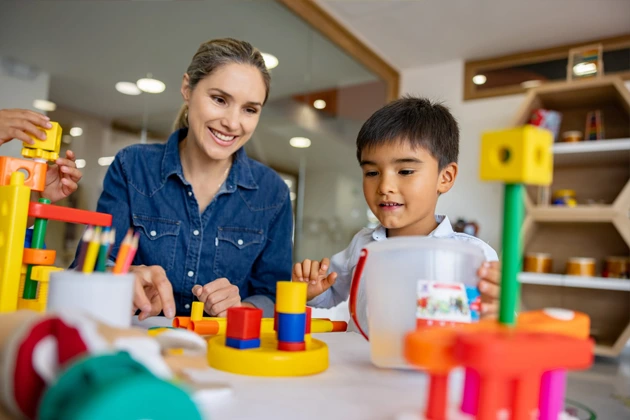Adults and kids both can go for occupational therapy if they are facing physical, cognitive, or sensory challenges. The purpose of occupational therapy for both is somewhat the same, helping an individual regain self-care and independence. However, this article intends to discuss- ‘What is occupational therapy for kids?’
Occupational Therapy
Occupational therapy is a type of therapeutic care that enables individuals suffering from cognitive, physical, or sensory problems to lead a life as normal as possible. This intervention uses everyday activities as a tool to promote the health and well-being of people. It allows them to participate in daily living by regaining physical, emotional, sensory, and cognitive abilities. Basic activities like eating and going to work to adaptive activities like learning to use wheelchairs and others are unlocked with this therapy.
What is Occupational Therapy for Kids?
Pediatric occupational therapy varies in terms of age from adult occupational therapy. Kids’ occupational therapy helps children reach their growth milestones to improve their daily lives. From mobility to communication ability, this therapy focuses on all the capabilities that a child needs to have. Kids suffering from any neurological disorder or injury may be recommended to undertake pediatric occupational therapy.
Occupational therapy for kids is designed to treat children unable to reach developmental milestones. Helping them overcome sensory challenges, they are provided with improved self-care and self-regulation skills. Occupational therapy can help your child in various areas, such as moving, learning, playing, daily living activities, and educational skills.
Here are a few examples of occupational therapy for kids-
- Encouraging children to write with a pencil
- Feeding themselves
- Playing with peers
This therapy is a tailored intervention that aims to address individual goals for every child.
Occupational therapy offers significant benefits for children. For more insights into how occupational therapy supports children and the latest updates on National Disability Insurance Scheme (NDIS) funding changes, see details here.
Pediatric Occupational Therapist
Occupational therapy for kids is performed by a pediatric occupational therapist. As a highly-trained healthcare professional, they specialize in pediatrics and child development with certification. They can work in clinics, hospitals, schools, rehabilitation centers, and several other organizations under the healthcare system.
Conditions Kids’ Occupational Therapy Treats
This therapy for kids can treat or control various physical and cognitive conditions affecting a kid’s health and life altogether. Here are the conditions this therapy manages-
- a) Coordination and Movement Issues
- b) Memory, thoughts, and perceptions related problems
- c) Develops visual-motor and visual-perceptual skills
- d) Mental health issues
- e) Sensory processing issues
- f) Autism
- g) ADHD or attention-deficit hyperactivity disorder
- h) Cerebral palsy
- i) Developmental delays
Importance of Occupational Therapy for Kids
Pediatric occupational therapy is crucial for kids in several manners. It not only helps a child perform daily activities but also boosts their confidence. By helping them develop motor, cognition, language, and other skills, this therapeutic intervention improves the quality of life for kids.
It not only develops skills but also infuses a sense of achievement within children. Through this therapy, significant improvements in children’s performance in schools have been noticed. They are likely to work more independently than before.
Occupational therapists also guide parents or guardians throughout their child’s sessions. With the guidance and strategies of the therapist, parents can effectively support the child’s development at home. The functional progress of a child is also achieved through occupational therapy.
Risks Associated with Pediatric Occupational Therapy
Undergoing therapy sessions can often be overwhelming for a child as they have to perform a series of tasks to help the therapist identify the root causes behind their problems. Sometimes, a sense of fear can strike your child before the sessions as they become aware of their condition. These jitters can cause a lack of interest, often leading to stress and an avoidant behavior.
Supporting your child while working closely with the therapist can help reduce these conditions. Communicating clearly with children can make them feel comfortable, encouraging open expression of thoughts and feelings. It is crucial for parents or guardians to adopt the therapist-recommended strategies to accelerate their child’s development and encourage them to push their boundaries to a happier life.










